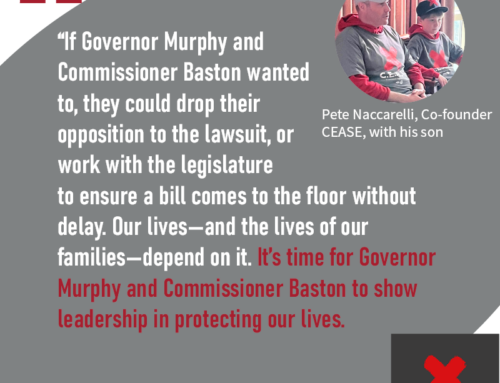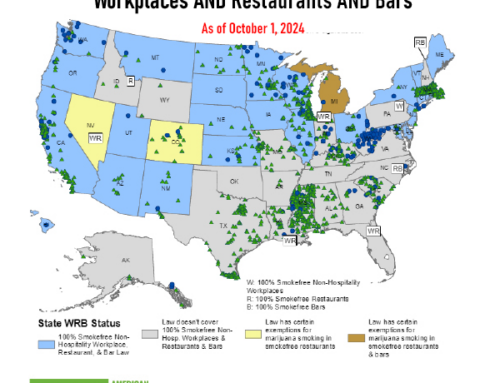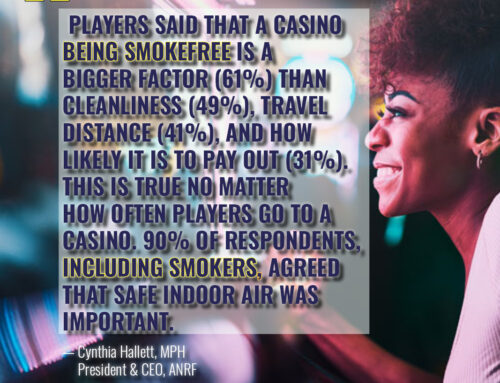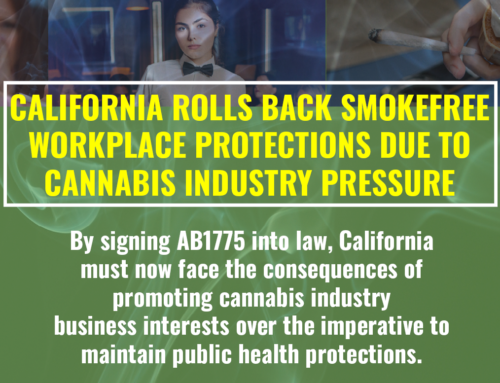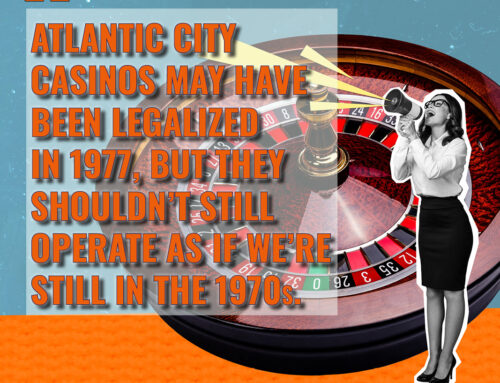Since ANR’s inception 45 years ago, we’ve been taking on Big Tobacco and their strategies to undermine smokefree air and other public health protections. Operating in the shadows has been their modus operandi, but after being convicted as racketeers in the infamous RICO case, we’ve been able to expose their primary objective – profit over people. For decades, their scientists and researchers undermined the science of secondhand smoke and created products that were even more addictive. Big tobacco is persistent. As the target market and customers have evolved, the industry seems to stay one step ahead with teams of well-paid lobbyists and marketing experts.
As youth e-cigarette usage rates skyrocketed in 2018, and public health worked to catch up, Big Tobacco was investing in e-cigarette companies and skirting regulatory authority. Now big tobacco is setting its sights on the commercialization of marijuana and pushing for on-site consumption to once again normalize smoking and vaping in public, undermining decades of smokefree protections.
KEEPING SMOKING INDOORS
With the network of local and statewide smokefree laws protecting 61% of the U.S. population, exposure to secondhand smoke has become a less visible issue. Gaps in protections persist, particularly in places and among populations targeted by the tobacco industry. Preemption or restricting local action on smokefree air remains one of the tobacco industry’s most successful strategies. As 2021 kicked off, twelve states still have some form of smokefree air preemption on the books. We remain on high alert as Big Tobacco is taking charge and striking popular smokefree laws in states like North Dakota and Montana. Rather than relying on a front group to provide political coverage, the industry is front and center in drafting legislation to create carve-outs and keep smoking indoors. Smokefree laws are popular and have become the expectation and the norm, but nonetheless these threats are serious and must be met with a groundswell response from advocates.
Tobacco industry interference deepens existing gaps in smokefree protections particularly for the LGBTQ2A population, people of color, and those that work in the hospitality industry. Companies like Altria / Phillip Morris tout claims to addressing equity but continuously fight measures to protect these same people.
WHAT WAS OLD IS NEW AGAIN
A supporter in Northern California’s Humboldt County alerted us to a cigarette advertisement gracing the pages of a local newspaper. For those that still consume print media, while jarring, cigarette advertisements are allowed. In this case, make no mistake: the industry is targeting Humboldt County where most of the marijuana in California is grown. Big Tobacco does not shy away from controversy and often pushes the limits of regulatory agencies as evidenced by e-cigarette marketing that flooded social media channels and engaged influencers before being shut down.
In state houses across the country, broader public health measures related to mask-wearing and COVID-19 response are under attack from long-time tobacco industry allies like the American Legislative Exchange Council (ALEC). This feels all too familiar as a mechanism to keep smoking indoors, which is impossible while properly wearing a mask.
MAKE WAY FOR BIG MARIJUANA
As states have moved to legalize recreational use of marijuana, smokefree advocates have faced a powerful lobbying effort to roll back popular, longstanding smokefree protections. In places like Colorado, the marijuana industry invested millions of dollars in their well-oiled PR machine to expand recreational, on-site consumption. This could be due in part to major investors like Altria and other tobacco industry giants who have had their eyes set on this product category for some time.
Virginia is the most recent state where lawmakers have moved forward with expanding recreational marijuana use with a new supporter – Altria has filed to lobby on behalf of the measure.
“Altria supports the federal legalization of cannabis under an appropriate regulatory framework. As a stakeholder in this industry, we intend to work with policy makers and regulators in support of a transparent, responsible, and equitable operating environment for the sale of cannabis,” Altria spokesperson George Parman told Cannabis Wire.
SMOKE IS SMOKE
It’s essential for tobacco prevention and public health professionals to engage in conversations on this issue. The bills that become the law providing the regulatory structure for marijuana legalization are often hundreds of pages in length and contain references to either compliance or exemption from statewide smokefree laws. These measures have gained momentum, moving quickly through the legislative process in an effort to close budget shortfalls with this perceived “green goldmine” and capitalize on tax revenues, making the opportunity to weigh in on maintaining smokefree protections precarious. Bottom line: smoke is smoke, and local and statewide smokefree laws should address on-site consumption as our model language suggests. Be sure to prepare your advocates and decision maker champions for this trend.
We can help! If you have questions about smokefree rollbacks or tobacco industry interference, contact us!


